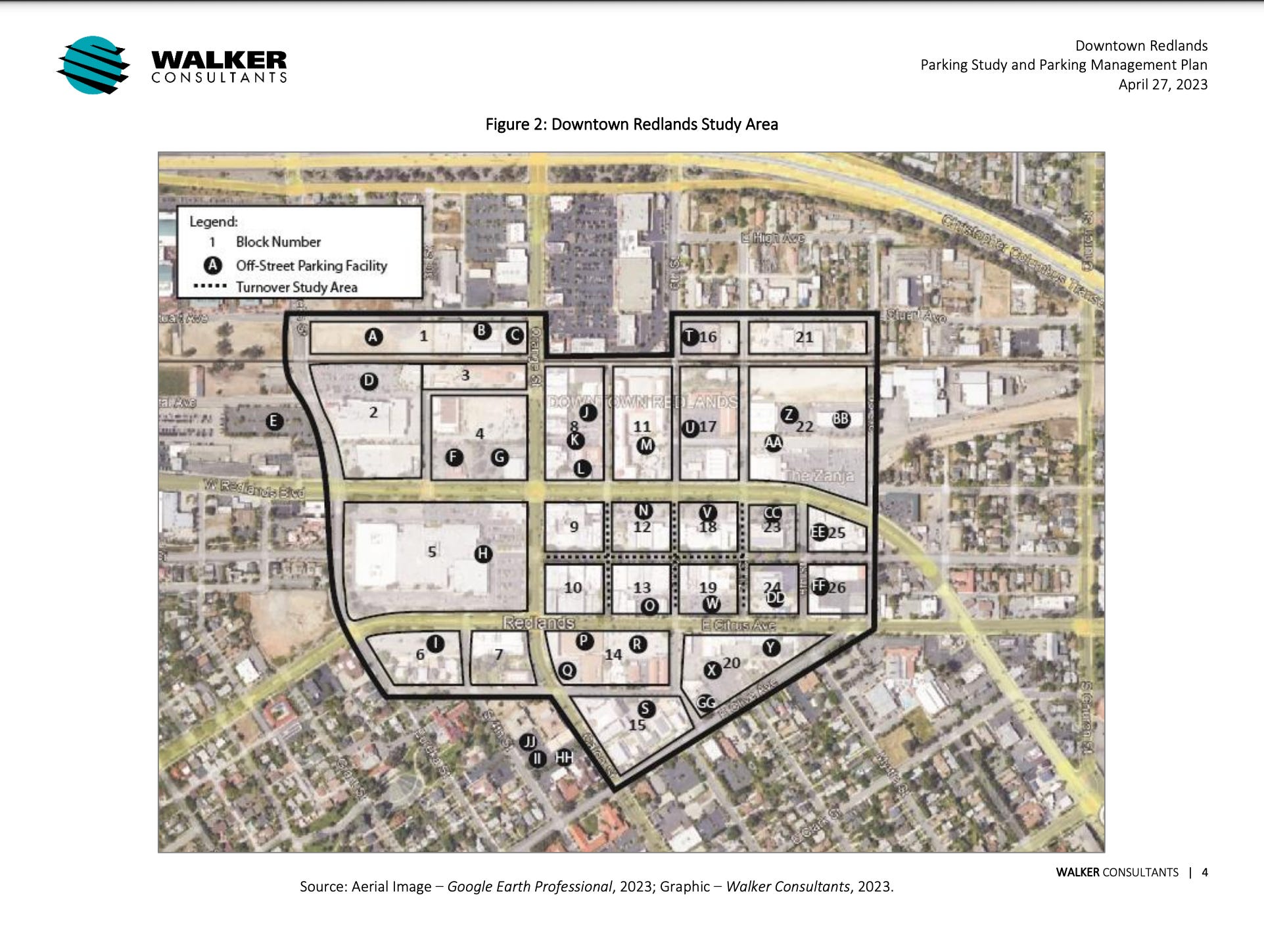Inland Empire United wins Las Vegas tourney
A 13-year-old area boys basketball team excelled in a recent Nevada tournament. Inland Empire United, in the Breakthrough Nationals in
What you need to know about Redlands 2023 Downtown Parking Study

REDLANDS, Calif. – Balancing parking supply and demand is crucial to public parking policy. Recently, city leaders and stakeholders have focused on achieving this balance to enhance a pedestrian-friendly urban core while ensuring sufficient parking for car-reliant residents, customers, and visitors.
Guiding much of this discussion is the 2023 Downtown Parking Study by Walker Consultants, aimed at evaluating parking availability and usage in downtown Redlands and proposing solutions to address concerns.
The study assessed parking supply and usage in the downtown district from Eureka to 9th Street, and from Stuart Avenue to Olive Avenue and Vine Street. The inventory comprises downtown public parking, other city-owned supply, and private parking, totaling nearly 5,000 spots. This includes 468 spots at the Redlands Mall parking lot.

Parking demand calculations considered only occupied spaces at the mall, as the available spaces will be replaced by the State Street Village project. Approved by the City Council in May 2022, the project will feature a five-level above-ground parking structure with 686 spaces and two subterranean parking garages with 640 total spaces. An additional 1,326 spots will accompany 700 multi-family dwelling units.
Measuring parking demand is crucial for ensuring efficient use of parking spaces. According to consultants, during peak hours, it's optimal for around 85% of street parking spots to be occupied. This ensures that most spaces are utilized while still allowing for availability to those who need to park. When occupancy goes beyond 85%, drivers tend to perceive parking as 'full' and spend more time searching for a spot.
The study was conducted on Thursday, Nov. 17, and Saturday, Nov. 19, 2022. It identified peak demand between 11 a.m. and 1 p.m. on both days.
At 1 p.m. on Thursday, 48% of the total spots were taken, while during Saturday lunchtime, only 40% were occupied. Although parking is generally available downtown, there are specific areas experiencing congestion.
State Street, in particular, faces high demand, with occupancy rates significantly exceeding the average. The Citrus Avenue parking structure and Ed Hales parking lot were nearly at full capacity during peak hours (99% and 97%, respectively).
Despite over 2,000 empty spaces in the downtown area, many drivers were seen circling in search of parking. The study emphasizes the importance of maintaining parking occupancies between 85 to 90%. Occupancy levels beyond this range frustrate visitors and may drive them away, while lower occupancy indicates an excess of parking.
The study conducted community outreach to gauge residents' and visitors' parking experiences and expectations in downtown Redlands. Overall, while satisfaction with the current parking situation was moderate, proximity to destinations remained a key concern.
Community Survey: The study examined the 2022 National Community Survey (NCS) for Redlands, revealing minimal public interest (5%) in prioritizing downtown parking improvements.
Downtown employees and businesses were interviewed by Walker Consultants, revealing significant concerns regarding parking:
The study's community outreach and feedback echoed the city's parking vision outlined in the Transit Village Specific Plan, guiding future development plans. The main objective is to implement a Downtown Parking Management system, prioritizing demand management over supply expansion. This includes ensuring ample on-street parking near establishments, promoting a 'park-once' environment through pedestrian-friendly streets, and optimizing existing parking resources for efficient use. By leveraging current infrastructure, resources can be redirected towards initiatives like enhancing walking and biking paths and improving safety.
The study utilized input from residents, visitors, and businesses, alongside current and projected supply and demand data, to propose parking policy solutions for downtown Redlands. These solutions are categorized into three main areas: managing supply, managing demand, and increasing supply.
Manage Supply:
Manage Demand:
Increase Supply:
The parking study was presented to the Traffic and Parking Commission (TPC) on May 25, 2023. The TPC provided feedback and recommendations to the City Council, including increasing enforcement of timed parking areas, developing shared-use agreements with private lots downtown, and improving the safety of existing public parking facilities. The Commission also suggested improving shading on pedestrian corridors downtown and additional parking on Citrus Avenue.
The study was presented to Redland City Council on Dec. 5, 2023.
Sign up for our weekly newsletter